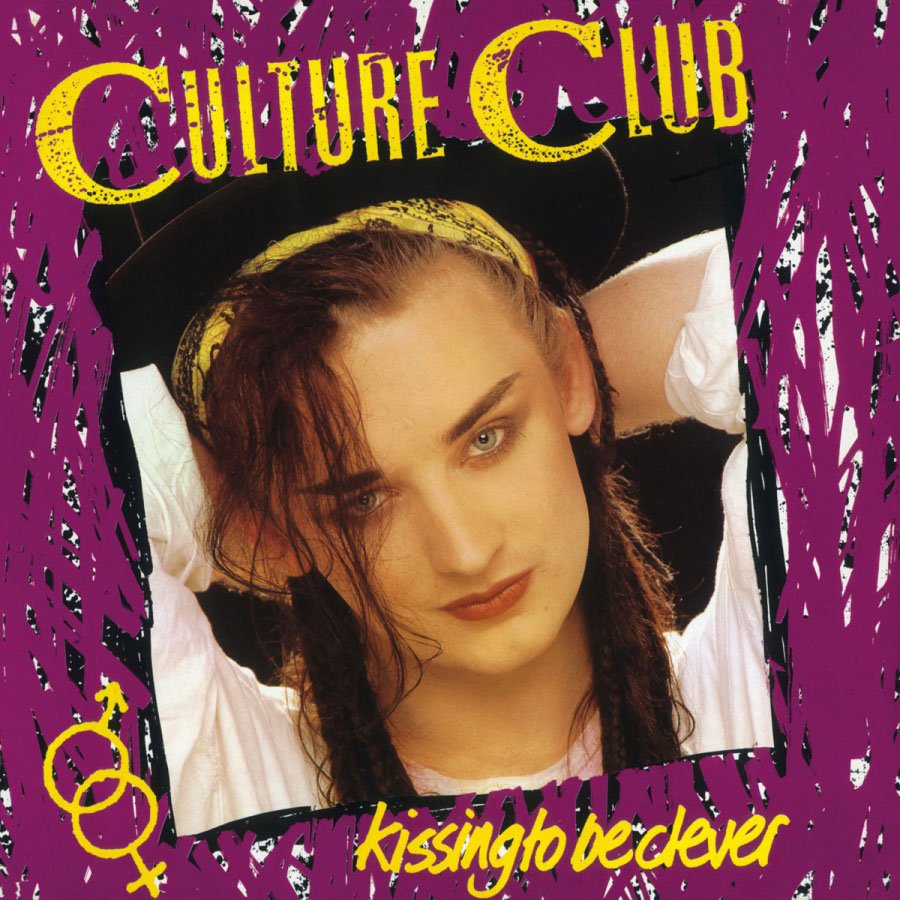Happy 40th Anniversary to Culture Club’s second studio album Colour By Numbers, originally released October 10, 1983.
Sparking into existence in the United Kingdom in 1978, the New Romantic movement was a thrilling intersection of music and fashion that remains one of the most seminal periods of development in British arts and culture. Unsurprisingly, the reach and influence of the New Romantic epoch didn’t rest solely on English shores. By mid-1982, an array of characters stormed the American airwaves in what came to be quickly known as the “Second British Invasion.”
One of the many definitive long players to find life during this period was Kissing To Be Clever. Released toward the latter half of 1982 via Virgin Records in England and Epic Records stateside, the album was attributed to a vibrant four-piece band known as Culture Club. Mikey Craig (bass guitar), Roy Hay (lead guitar, keyboards), Jon Moss (drums, percussion) and George O’Dowd (vocals) were an instant sensation due not only to their mesmeric and singular blend of reggae, synth-pop, soul and rock aesthetics, but their charismatic frontman O’Dowd.
Kissing To Be Clever was a critical and commercial triumph producing five charters overall. Out of those five singles, three of them—“Do You Really Want to Hurt Me?,” “Time (Clock of the Heart)” and “I’ll Tumble 4 Ya”—went on to become sizable singles on both sides of the Atlantic by the summer of 1983. At that junction, Culture Club had already begun work on their sophomore set, Colour By Numbers.
The group weren’t keen on their legacy resting on just one platinum record; their vision for Culture Club was much bigger than that. Particularly for O’Dowd, better known by his stage moniker Boy George, the quartet’s second outing was central to extending their longevity. O’Dowd had taken great care to incorporate a striking visual presence for himself and his bandmates; now, it was time to ensure the music continued to get that same attention to detail.
Culture Club once again enlisted the services of producer Steve Levine. Levine had worked closely with the band on Kissing To Be Clever and had a solid grasp of the outfit’s work ethic and creative autonomy. This element is core to Culture Club and Levine getting on the same page in relation to them flipping the heavier, funkier sonics of Kissing To Be Clever into something lighter and more melodically focused for Colour By Numbers.
Watch the Official Videos:
This aural switch is immediately noticeable on the record’s opening piece—and second single—“Karma Chameleon.” The sprightly gem laden with catchy harmonica riffs (courtesy of Judd Lander) is beautifully understated on the whole, but still insistent with its irrepressible hook.
With exceptions issued to the sides “Miss Me Blind,” “Mister Man” and “Man-Shake”—the latter composition cast as a B-side to one of the LP’s eventual singles—much of the overt dance and reggae vibes were largely absent on the band’s sophomore collection. The awareness and intent in Culture Club’s usage or heightening of other music tones on Colour By Numbers is both striking and refreshing. Some of those tones include jazz-fusion (“Changing Every Day,” “Stormkeeper”), torch songs (“Black Money”) and classic soul (“Church of the Poison Mind”). All of them are expressively communicated by the superb playing of Craig, Hay and Moss with the additional augmentation of studio session musicians as needed.
What did stay unchanged were the lyrical thrusts of each song, with O’Dowd joined by his colleagues in the scripting of each track present on the long player. However, O’Dowd led as the primary songwriter in relation to setting the emotional mood for the compositions.
Much of O’Dowd’s tumultuous relationship with Jon Moss—then hidden from public view—supercharged nearly every cut on Colour By Numbers. Specifically, “Karma Chameleon,” “Black Money,” “Victims” and the title song (another alternate side to one of the project’s singles) possess a weighty romantic pathos partially masked by their impressive pop song structuring. Bringing the gravitas of the material home is O’Dowd’s soulful vocal delivery. On occasion, O’Dowd got some powerful support from the inimitable backing singer Helen Terry that yielded even more emotional energy to these already riveting pieces.
Released in early October of 1983, Colour By Numbers was a textbook critical, commercial and creative success. The LP in its entirety (as well as it singles) made Culture Club global ambassadors for the New Romantic guard overnight. Follow-ups were issued hastily in 1984 (Waking Up with the House on Fire) and 1986 (From Luxury to Heartache) before Culture Club disbanded acrimoniously to pursue separate career paths as has been well documented.
Enjoying this article? Click/tap on the album covers to explore more about Culture Club:
In the slipstream of their parting, Culture Club later embarked upon several (mostly) friendly reunions between 1998 and 2018. Don’t Mind If I Do (1999), their excellent fifth studio effort, was their first formal recording to result from their initial reunification. It preceded the 2003 reissue of Colour By Numbers that notably restored all of the B-sides from its corresponding singles onto the album proper for collectors.
And though the roots for their sixth studio affair Life stretch back to their 2014 reformation, longtime fans enjoyed another solid batch of pop-soul numbers from the group upon its release five years ago in October 2018. It’s a standard Culture Club set for themselves early on in their canon with Colour By Numbers. The album holds fast to a musical and lyrical timelessness that continues to thrive well past the era of its origin, something every recording artist often aspires to but doesn’t always achieve.
LISTEN:
Editor's note: this anniversary tribute was originally published in 2018 and has since been edited for accuracy and timeliness.



